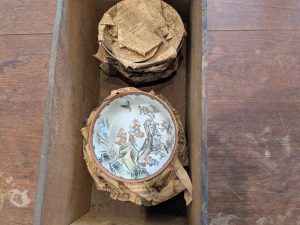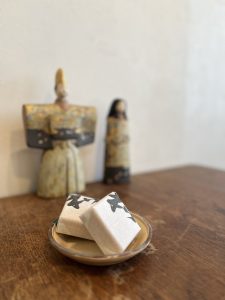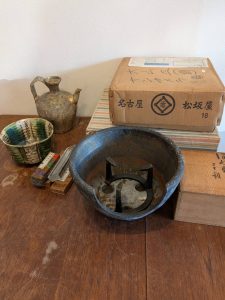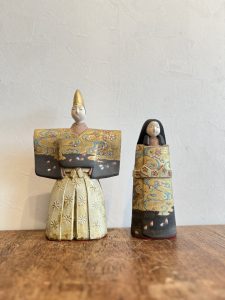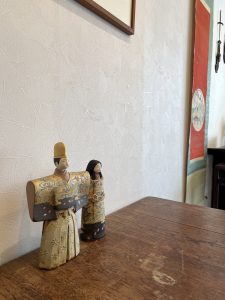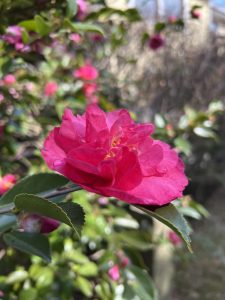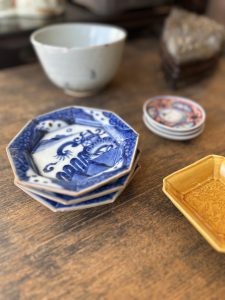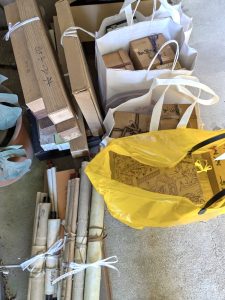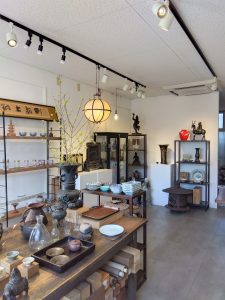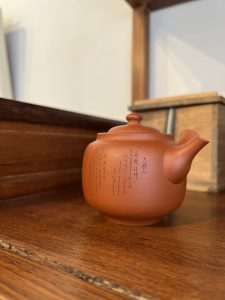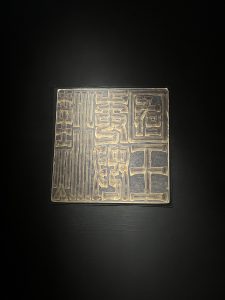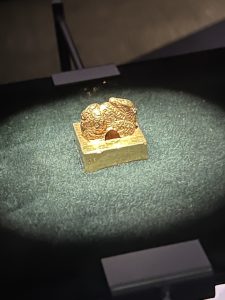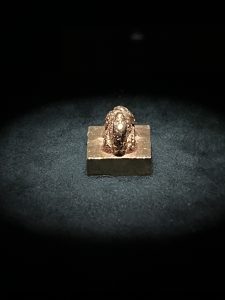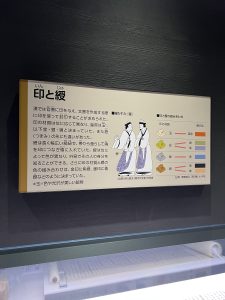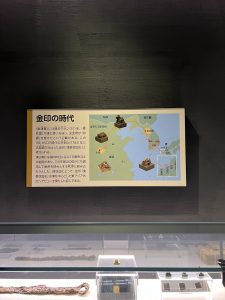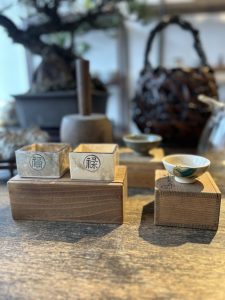ひな人形は雨水の季節に飾る?(愛知県名古屋市千種区姫池通 骨董買取 古美術風光舎)
2025.02.19
本日は日本各地で雪の警報が多数出ております。暦の上では二十四節気の「雨水」の時期に入っており、本来なら寒気が緩み雪が雨となり、積もっている雪も溶けだし水になる季節とされています。ただ朝のニュース映像を見る限り、今週末にかけて雪の影響が続きそうです。
地球温暖化と聞くと、降雪が減るイメージがありますが、実は温暖化により海水の温度が上昇し、発生した水蒸気が雪雲を発達させるのだそうです。日本海で水蒸気による雪雲が生まれ、シベリアや中国大陸からの寒気が山にぶつかると一気に雪が降ることとなります。
春まであと少し、温かいものをいただきながら何とか乗り越えたいものです。
昨日のお客様からの美味しい最中。おやつにいただきエネルギーをチャージできました。小豆の粒が大きくて絶品でした。ありがとうございました。
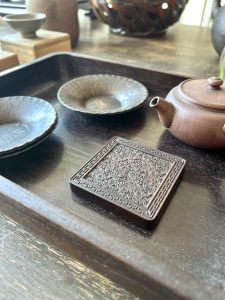

さて先ほども書きましたが、今年は2月18日より二十四節気の「雨水」に入りました。農耕の準備を始める時期の目安ともされ、江戸時代中頃からは「雨水」に伊勢神宮参りをすることが庶民の流行りともなっていたようです。
また女の子の健やかな成長を祝う雛祭りが行われるころでもあり、「雨水に雛人形を飾ると良縁に恵まれる」とも言われているようです。元来ひな人形は、身に降りかかる厄を人形に移し、身代わりとなってもらって川に流すものでした。そのため水が豊かな雨水の時期に人形を飾るのが良いとされたようです。
そんな言い伝えがあるとは知らず、毎年ひな人形を飾るのが遅れてしまう私は、今年こそはと立春を過ぎてすぐに張り切って飾りました。気持ちの問題でしょうが、来年は雨水の時期を迎えてから飾ろうと決めました。忘れていなければ…。
またこの時期に旬を迎える食材は栄養が豊富だとされ、「ハマグリ」は産卵に向けて栄養をたっぷりと蓄えて美味しくなるといいます。二枚の貝殻がぴったりと重なるため夫婦円満の象徴でもあり、お吸い物は雛祭のお祝いには欠かせないものとなっていますね。
他にもブリ、さわらなどの魚のほかに、大根や白菜など甘さが増している気がいたします。個人的にはこの時期のブロッコリーが芯まで甘くて美味しい!と感じています。
体調を崩さないようビタミンCも採らなければと思うのですが、毎年大量に購入していた「みかん」が今年は高値で中々手が出ません。ふと横をみると静岡県産の「ぽんかん」が売られており、懐かしくて久しぶりに購入してみました。オレンジのように甘みが強く、酸味が少なめの爽やかなお味で家族も気に入っておりました。
ぽんかんという響きが可愛くて、調べてみますと、インドが原産地の柑橘でした。中国、台湾を経て明治29年に鹿児島に伝わったとされています。
ポンカンの「ポン」はインド西部の地名「Poona(プーナ)」からきており、「カン」は柑橘の柑から名付けられたとされています。日本でさらに品種改良され太田ポンカン、今津ぽんかん、吉田ぽんかんなど多くの品種が生まれています。
これまで温州みかん一筋だったので、色々な柑橘も試してみたくなりました。
ふと愛媛の「ポンジュース」のポンはポンカンからきているのかと思い調べてみましたら、なんと「日本一(にっぽんいち)」の「ぽん」からきているとのこと。当時の愛媛県知事だった久松 定武氏が名付け親だそうです。
宣伝ポスターには「日本で生まれて世界で輝くポンジュース」とあり、日本一のジュースになるようにとの願いがこめられているとのこと。愛媛県の方々にはきっと常識なのでしょうね。
知らずにやり過ごしていることの何と多いことかと実感いたします。
それでは、また次の機会に。(スタッフH)
As I mentioned earlier, this year we entered the “rainy water” season of the 24 solar terms on February 18. It is said to be a good time to start preparing for agriculture, and since the middle of the Edo period (1603-1867), it has been a popular custom among commoners to visit the Ise Shrine during “Amamizu”.
It was also around the time of the Hina Festival, which celebrated the healthy growth of girls, and it is said that “if you display hina dolls in Amamizu, you will be blessed with a good marriage”. Originally, hina dolls were used to transfer the bad luck that befell them to the dolls, who would then take the place of the dolls and be washed down the river. Therefore, it was thought to be a good time to display dolls during the rainy season when water was abundant.
I didn’t know such a legend existed, but I have been late in decorating dolls every year, so this year, I decorated them right after the first day of spring. I guess it’s just a matter of feelings, but I decided to decorate them after the rainy season next year. Unless I forget….
Foods that are in season at this time of year are said to be rich in nutrients, and clams are said to be delicious as they store plenty of nutrients in preparation for spawning. The two shells overlap perfectly, symbolizing marital bliss, and soup is an indispensable part of the Hinamatsuri celebration.
In addition to other fish such as yellowtail and Spanish mackerel, I feel that daikon radish and Chinese cabbage also add sweetness to the dish. Personally, I feel that broccoli at this time of year is sweet to the core and delicious! I feel that broccoli is sweet to the core this time of year!
I also need to take vitamin C to stay in good health, but the price of oranges, which I used to buy in large quantities every year, is so high this year that I can’t afford them. I looked beside the store and saw “ponkan” oranges from Shizuoka Prefecture on sale, which made me nostalgic, so I bought some for the first time in a while. My family liked it because it was sweet like an orange and had a refreshing taste with little acidity.
Ponkan” sounded cute, so I looked it up and found that it was a citrus fruit that originated in India. It is believed to have been introduced to Kagoshima in 1896 via China and Taiwan.
The “Pon” in “Ponkan” comes from “Poona,” the name of a place in western India, and “Kan” is said to be named after the citrus fruit “Kan. The variety has been further improved in Japan and many varieties have been created, including the Ota Ponkan, Imazu Ponkan, and Yoshida Ponkan.
I have always been a fan of Onshu Mikan, so I wanted to try a variety of citrus fruits.
I wondered if the “Pon” in Ehime’s “Pon Juice” came from “Ponkan,” but to my surprise, I found out that it came from “Pon,” which means “Japan’s best. Sadatake Hisamatsu, then governor of Ehime Prefecture, is said to be the godfather of the name.
The advertising poster reads, “Pon juice born in Japan and shining in the world,” expressing the hope that it will become the best juice in Japan. It must be common knowledge to people in Ehime Prefecture.
I realize how many things we pass over unnoticed.
See you next time. (Staff H)
*****************
ご実家の整理やお片付けなどをされている方のご相談などが多くございます。
お片付けなどくれぐれもご無理のないようになさってくださいませ。
風光舎では古美術品や骨董品の他にも絵画や宝石、趣味のお品など様々なジャンルのものを買受しております。
お片付けをされていて、こういうものでもいいのかしらと迷われているものでも、どうぞお気軽にご相談下さいませ。
また風光舎は、出張買取も強化しております。ご近所はもちろん、愛知県内、岐阜県、三重県その他の県へも出張いたします。
まずは、お電話お待ちしております。
愛知県名古屋市千種区姫池通
骨董 買取【古美術 風光舎 名古屋店】
TEL052(734)8444
10:00-18:00 OPEN
#出張買取#骨董#古美術#骨董品#絵画#版画#茶道具#刀剣#彫刻

